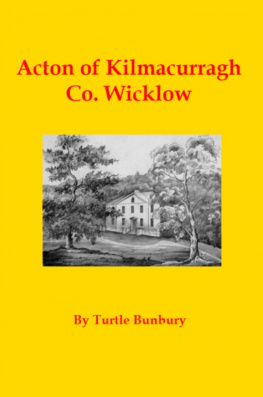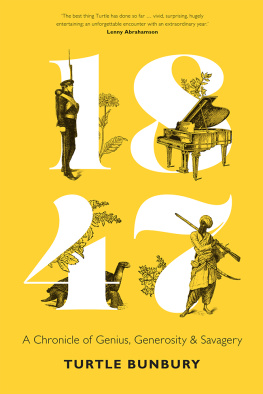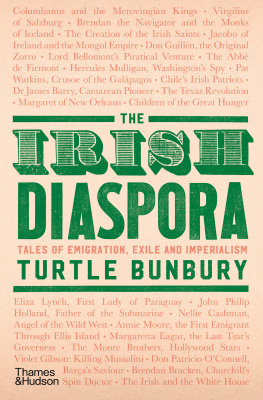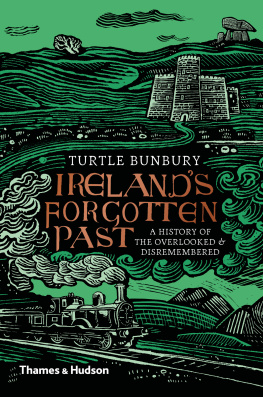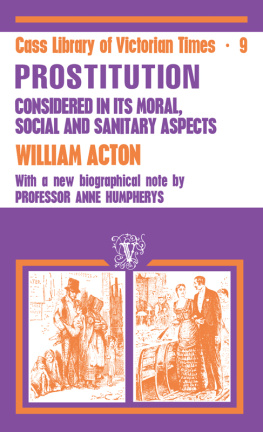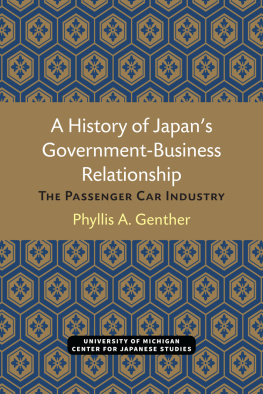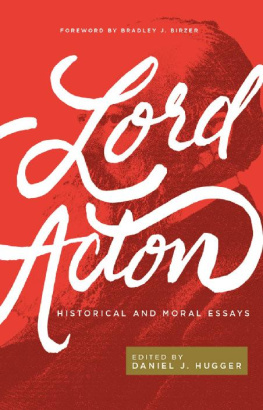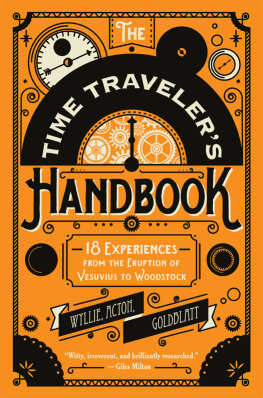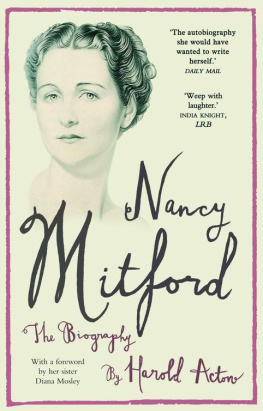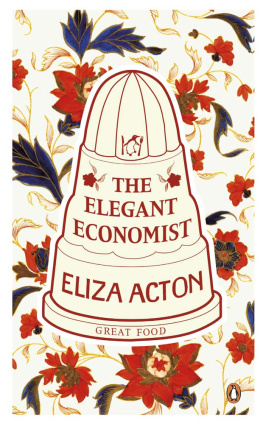Acton of Kilmacurragh Co. Wicklow
Copyright 2016 Turtle Bunbury
Published by Arthur Kavanagh at Smashwords
Smashwords Edition License Notes
This ebook is licensed for your personal enjoymentonly. This ebook may not be re-sold or given away to other people.If you would like to share this book with another person, pleasepurchase an additional copy for each recipient. If youre readingthis book and did not purchase it, or it was not purchased for yourenjoyment only, then please return to Smashwords.com or yourfavorite retailer and purchase your own copy. Thank you forrespecting the hard work of this author.
Table of Contents
We all of us descend from men and womenwhose names we will never know. Until recent centuries, everygeneration simply came and fell like fields of wheat. When onecontemplates the extraordinary legacy of our lost ancestors, itseems they understood the machinations of our planet better than wedo. It matters not whether these forbears were from the icy Articor the plains of Africa, the deserts of Arabia or the forests ofEurope. In every land there are testimonies to the ingenuity offorgotten people. County Wicklow, the soft, mountainous terrain inwhich this book is set, sparkles with the granite legacy of theseancient people. Circles of rock echoing a harvest moon, standingstones pointing to a solstice morn, mounds of grassy earth wherechildren once danced and old men fought.
County Wicklow is a gorgeous part of Ireland.Between its voluptuous mountains and rocky coastline, it hasentranced everyone from philosophical hermits and Vikings maraudersto Hollywood film directors and the economic whiz-kids of modernIreland.
The nine principal families who feature inthis book descend from adventurous people of courage and convictionwho arrived in Wicklow when Ireland was a violent island perched onthe edge of the world. Some like the Humes, Dicks and Leslies wereScottish in origin, beneficiaries of Jacobite kings and theprosperous linen trade in Ulster. Most were English. The Bartonscame from Lancashire, the Childers from Yorkshire, the Wingfieldsfrom Suffolk and the Ellis's and Tighes from Lincolnshire. Someclaim descent from exciting characters; the Wingfields from a Saxonwarrior, the Brabazons from a Belgian mercenary who fought atHastings.
In the two hundred years following the Tudorinvasion of Ireland in the mid-16th century, each of these familiesestablished themselves as cogs in the colonial system. Ownership ofland, the acreage beneath one's feet, was the most patent symbol ofwealth. As such, their influence came to bear not just on theirvarious land-holdings but also upon the whole of Ireland and, inmany instances, upon the wider world beyond.
Thus these families became intertwined withthat extraordinary mesmerizing, bewildering age of the Ascendancy.Interpreting the past can be a double-edged sword and it is alwaysworth noting where a particular author's loyalties might lie. Thereis a growing awareness that history, good or bad, is made bypeople, real human beings with real human conundrums. Perhaps it isthe influence If so many newcomers to our shores but Ireland isgradually coming to terms with its past. And not everything aboutit was awful.
Any family history that focuses on the bare,irreducible facts of birth, deaths and marriages will quicklybecome unbearably tedious to read. Without the dramatic assistanceof anecdote and description, the lineage of even the mostenterprising of clans can prove exceedingly dull. I hope the talestold herein add a small splash of colour to the past. Many of thecharacters in this book were players on a stage that circled theentire World. A cousin of the Wingelds of Powerscourt founded thesettlement of Jamestown, Virginia. Henry Ellis of Magherymore wasGovernor of Georgia. The Bartons made their fortune selling Frenchwine to rich Americans. The Dicks prospered in the Far East and theChilders in Ceylon. The philanthropic no-nonsense 12th Earl ofMeath would undoubtedly have painted the globe in the colours ofthe Empire but down at Glendalough, Erskine Childers would nd thetreatment of the Boers in South Africa soured his appetite for theimperial Way. No family was unaffected by the conflicts of the 20thcentury. At Kilmacurragh, ownership of the ancestral estate wasthrown into chaos by the death in action of all three Actonbrothers. As regards these houses today, only Kilruddery andFortgranite remain in the hands of their original owners.Powerscourt still carries the influence of the Wingfields throughtheir close kinship with the Slazengers. The Powerscourt estate isset to become home to the most luxurious five star hotel in Irishhistory. There are many in the neighbourhood of Glendalough Housewho recall the families of Barton and Childers though the houseitself is gone. Mimi Hume passed away in 1992, since when HumewoodCastle has become a popular retreat for sportsmen and celebrities.Shelton Abbey is presently a reformatory prison and Magherymore isheadquarters of the Columban Missonaries. Kilmacurragh is a ruinawaiting restoration and Rossanagh is a ghost of its former self.So now, as the saying goes, I raise my glass to the past.
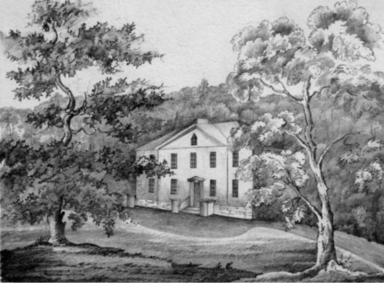
Adiuvante Deo (With the help ofGod)
Kilmacurragh lies a few miles south of Glenealy,midway between Rathdrum and Brittas Bay. The property came to theActon family during the 17th century at the end of which they builtthe original house of Kilmacurragh (or Westaston). During the1850s, the forward thinking Tom Acton planted an arboretum that isnow in peak condition with an exceptional array of crimsonrhododendrons, Irish yews, giant shaggy podocarpus and exceptionalpleasure grounds, carpeted in bluebells in the spring, birdsongechoing around the branches of trees from Peru, Tasmania, theMiddle East and Indochina. Toms brother William was a hero at thebattle of Inkerman while another brother Charles Ball-Acton wasprominent in India. The death of all three Acton brothers betweenthe Boer War and the First World War spelled an end for the familyalthough the last surviving member of the family, Charles Acton,distinguished himself as one of Irelands greatest music critics inthe 20th century.
On 20th September 1697, the Treaty of Ryswick broughtto an end the devastating nine year War of the Grand Alliance whichhas pitted the might of Louis XIVs French armies against the GrandAlliance of England, Spain, the Holy Roman Empire and the UnitedProvinces. Colonies were exchanged, Duchys restored and Louisundertook to recognize William III as king of England. He furtherpromised to give no further assistance to the deposed Catholicmonarch, James II, who was then in exile at the French palaceSaint-Germain-en-Laye. Ryswick was the most outstanding event in anotherwise quiet year, closely followed by the reopening of St.Pauls Cathedral in London and the departure of Peter the Great, orartilleryman Pjotr Mikhailov, on his incognito tour ofEurope.
Arguably the most important consequence ofRyswick was the advent of peace. Indeed, for many in England andIreland it must have seemed as though they had been at war alltheir lives. The elderly could still remember the horrors of thecivil war in the 1640s while for younger generations the chaos thatensued during Jamess and Williams struggle for the English thronewas very fresh in their minds. But now at last there was peace. Andwith peace there is prosperity.
The gentry and aristocracy of Ireland were not slowto capitalize on the end of the European war. Almost immediatelythey began recruiting former soldiers and engineers to reconstructand start anew on grand country houses across the land. One suchproperty was that of Kilmacurragh, a Queen Anne house just outsideGlenealy on the east coast of County Wicklow. Though now in anexceedingly ruinous condition, the gorgeous two-storey, five bayhouse is nonetheless one of the few remaining early panelled housesin Ireland. It comprised five reception rooms and eight bedrooms,and like many houses in the area built during this time, it wassited on a hill facing east, making it particularly cold in thewinter months.

